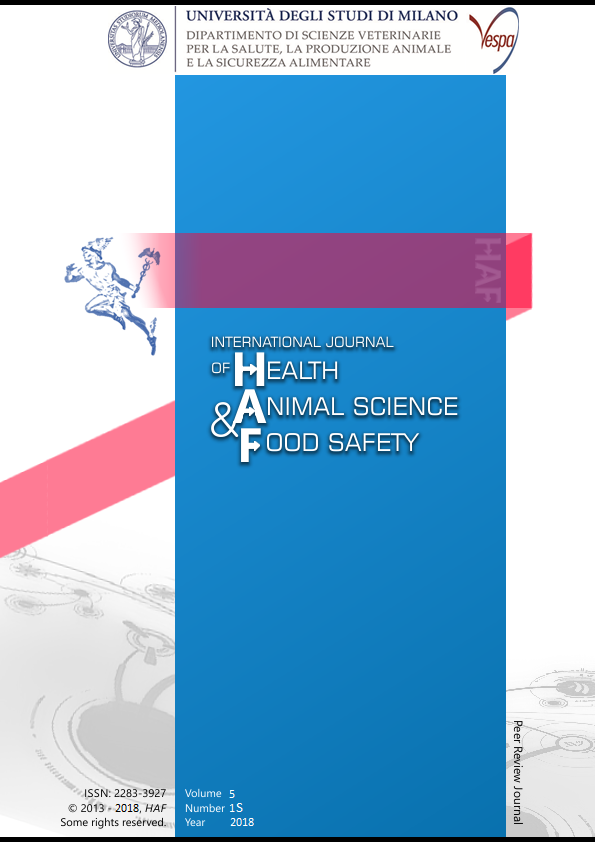Abstract
An early diagnosis of sepsis could allow a better prognosis and avoid the abuse of antibiotic administration; unfortunately, in veterinary medicine, specific and sensitive markers of sepsis are not available.Because Protein Carbonyls (PCOs), that result from protein oxidation, are widely used in human medicine as sepsis markers , the aim of our study was to validate an ELISA kit (Enzolifesciences, 3V Chimica, Roma) on canine serum and to measure PCOs, after a preliminary validation study, in three groups (homogeneous for age and size): healthy dogs without clinical or laboratory abnormalities (A, n=14), dogs with septic (B, n=14) and non-septic inflammation (C, n=12) at the first presentation and without previous treatments. Moreover, Paraoxonase-1, a negative acute phase protein with anti-oxidant properties (PON-1) was measured in each group with a method already validated in dogs.A Kruskal-Wallis test followed by a Wilcoxon signed rank test was used to evaluate differences between groups.The ELISA method for measuring PCOs showed a very good precision (coefficient of variation <12%) and a good accuracy in spiking-recovery tests.Compared with controls, the concentration of PCOs was significantly higher either in dogs with sepsis (P<0.001) or in dogs with non-septic inflammation (P=0.005) but no significant differences were found between the two groups of sick dogs. Conversely, PON-1 was significantly lower in sick dogs compared with controls (P<0.001 for both groups) and in septic dogs compared with dogs with non-septic inflammation (P=0.001).A negative correlation between the two markers was found (P<0.001, r=-0.594) Receiver operating characteristic (ROC) curves demonstrated that both markers may discriminate dogs with sepsis with the other groups. However, PCO was less sensitive than PON-1 in diagnosing sepsis.Future studies should be focused on the association of PCOs with other inflammatory markers, as well as the possible prognostic role of PCOs based on the outcome of the enrolled patients.
Riferimenti bibliografici
Abu-Zidan, F.M., Plank, L.D., Windsor, J.A., 2002. Proteolysis in severe sepsis is related to oxidation of plasma protein. European Journal of Surgery. 168, 119-123.
Colombo, G., Clerici, M., Garavaglia, M.E., Giustarini, D., Rossi, R., Milzani, A., Dalle-Donne, I., 2015. A step-by-step protocol for assaying protein carbonylation in biological samples. Journal of Chromatography B. 1019, 178-190.
Rossi, G., Giordano A., Pezzia F., Kjelgaard-Hansen M., Paltrinieri S. 2013. Serum
paraoxonase 1 activity in dogs: preanalytical and analytical factors and correlation with C-reactive protein and alpha-2- globulin. Veterinary Clinical Pathology. 42, 329-341.
Ruggerone, B., Colombo, G., Paltrinieri, S. Validation of a Western Blot Technique for assaying Protein Carbonylation in canine serum. The Veterinary Journal. Under review.
This work is licensed under a CC BY-SA 4.0 international

